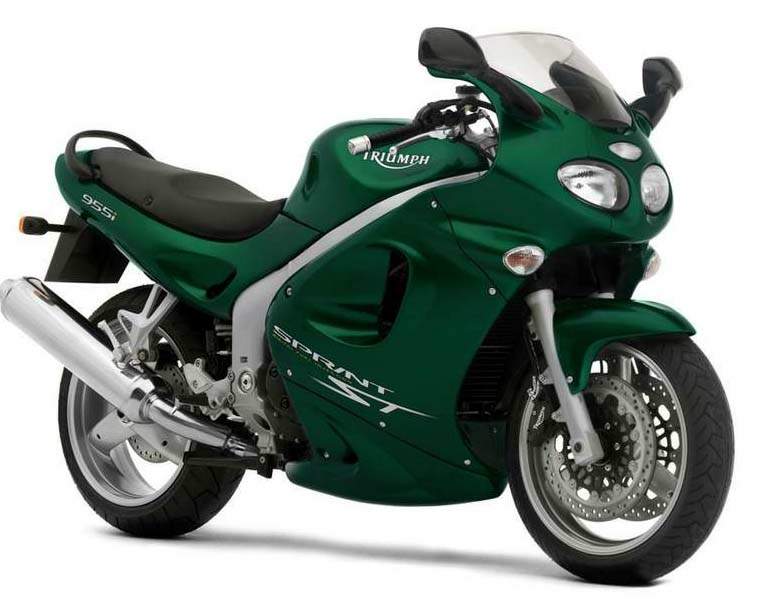
|
|
|
|
|
|
Classic Bikes
Custom Bikes
Individual
Racing Bikes AJP
AJS
Aprilia
Ariel
Avinton / Wakan
Bajaj
Benelli
Beta
Bimota
BMW
Brough Superior
BRP Cam-Am
BSA
Buell / EBR
Bultaco
Cagiva
Campagna
CCM
CF Moto
Combat Motors
Derbi
Deus
Ducati
Excelsior
GASGAS
Ghezzi Brian
Gilera
GIMA
Harley Davidson
Hero
Highland
Honda
Horex
Husaberg
Husqvarna
Hyosung
Indian
Jawa
Kawasaki
KTM
KYMCO
Laverda
Lazareth
Magni
Maico
Mash
Matchless
Mondial
Moto Guzzi
Moto Morini
MV Agusta
MZ / MuZ
NCR
Norton
NSU
Paton
Peugeot
Piaggio
Revival Cycles
Roland Sands
Royal Enfield
Sachs
Sherco
Sunbeam
Suzuki
SWM
SYM
Triumph
TVS
Ural
Velocette
Vespa
Victory
Vincent
VOR
Voxan
Vyrus
Walt Siegl
Walz
Wrenchmonkees
Wunderlich
XTR / Radical
Yamaha
Zero
Video
Technical
Complete Manufacturer List
|
Triumph Sprint ST
First unveiled at the end of 1998, Triumph's Sprint ST is the Hinckley firm's interpretation of the modern sports-tourer bike. Long dominated by Honda's VFR800, this competitive sector of the market requires a machine with the comfort for easy 1200km (750-mile) days, as well as track-friendly performance on arrival. On paper, the Sprint ST fits the bill. Powered by Triumph's latest 955cc three-cylinder engine, the ST can hit 256km/h (160mph), while weighing less than the VFR, at just 207kg (4561b). Adjustable suspension and sporty tyres add chassis sporting potential, and the sleek bodywork and single-sided swingarm supply classic good looks. Strong, sportsbike brakes give class-leading performance.
Road test by Adrian Percival
Second opinion by Dick Henneman

|
|
|
Any corrections or more information on these motorcycles will be kindly appreciated. |